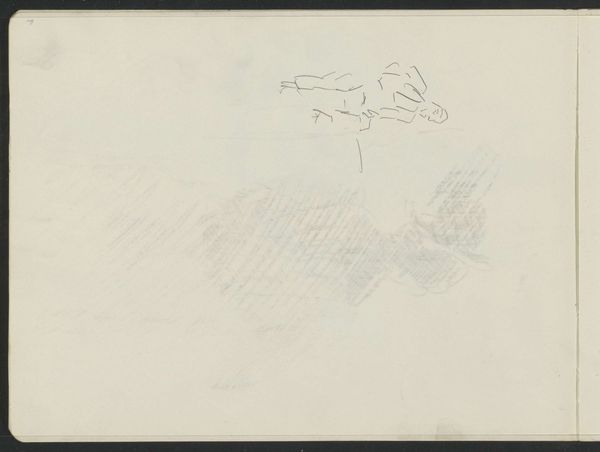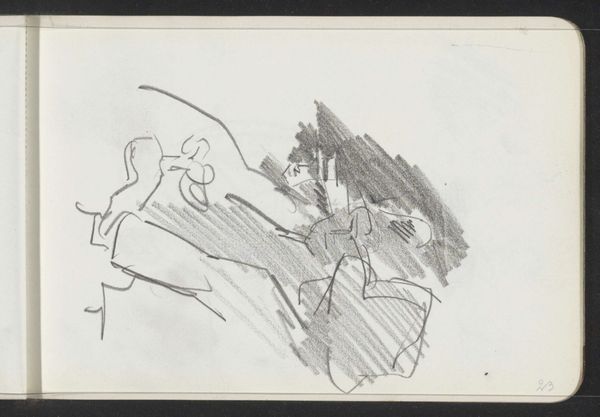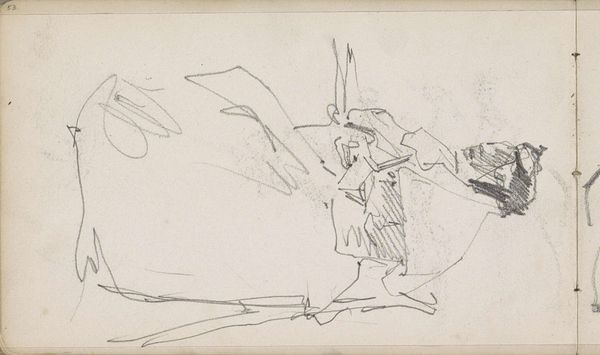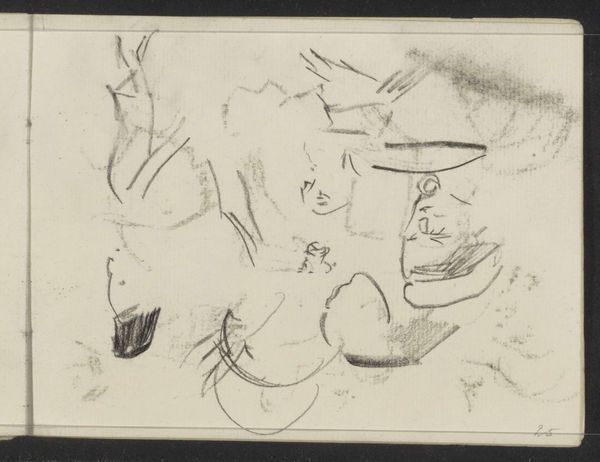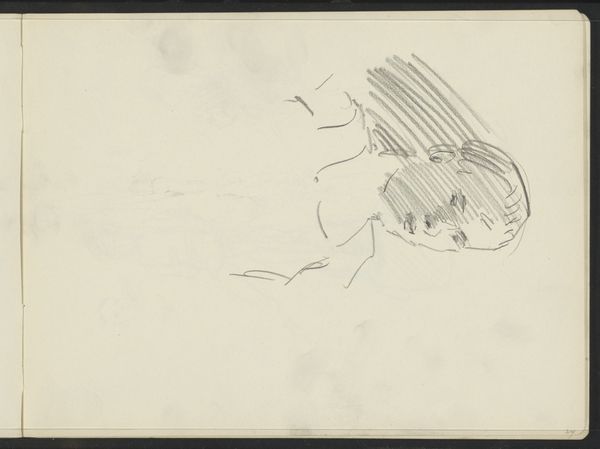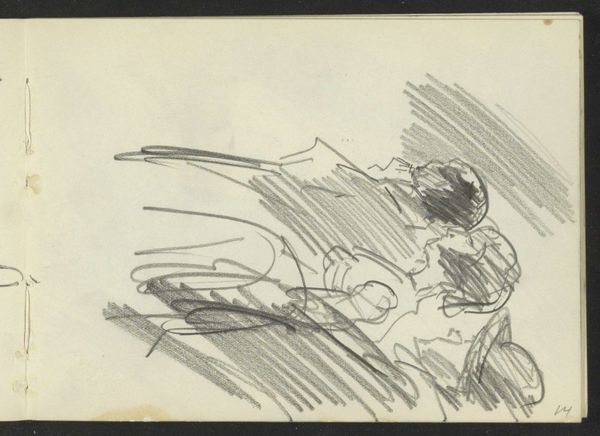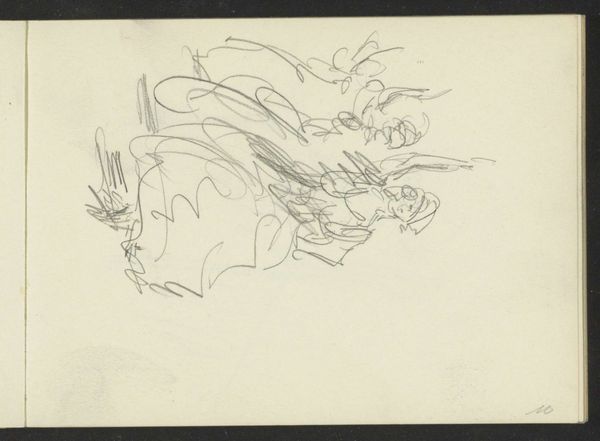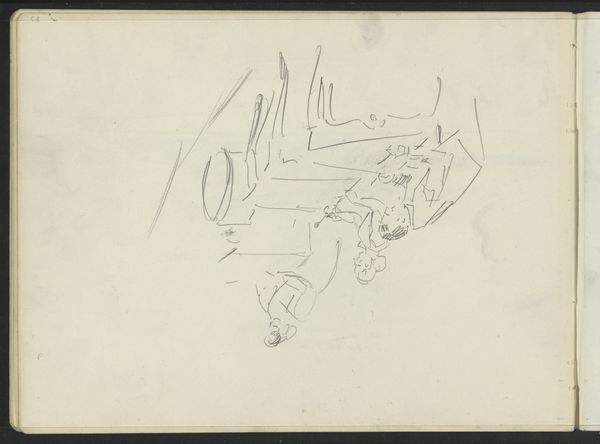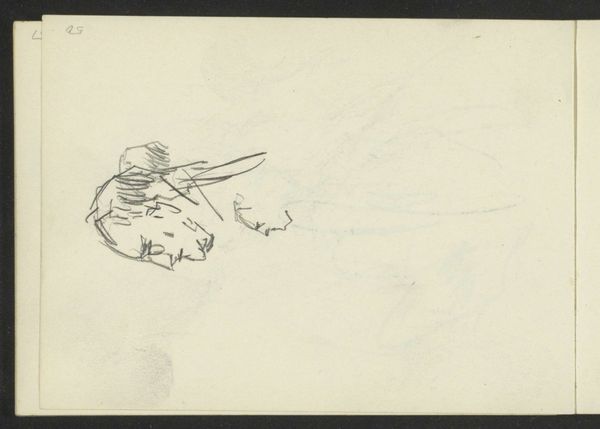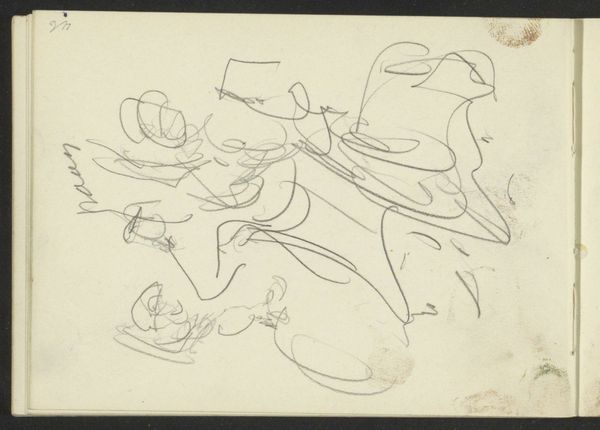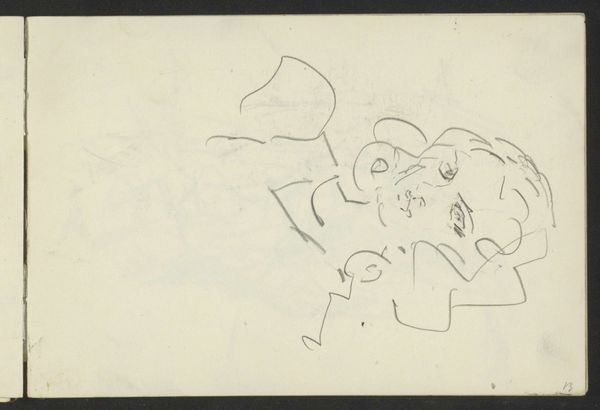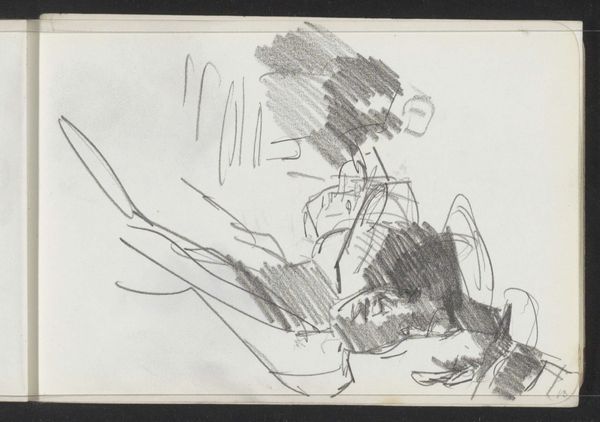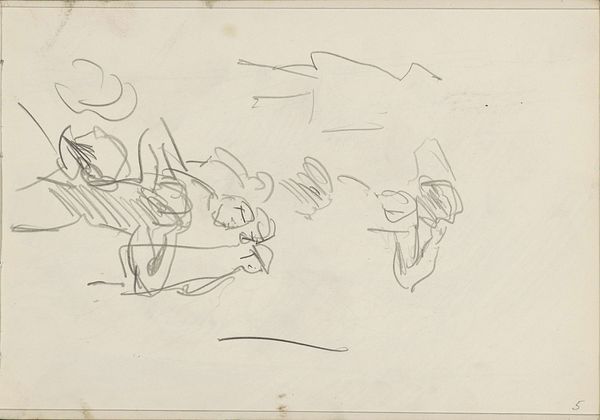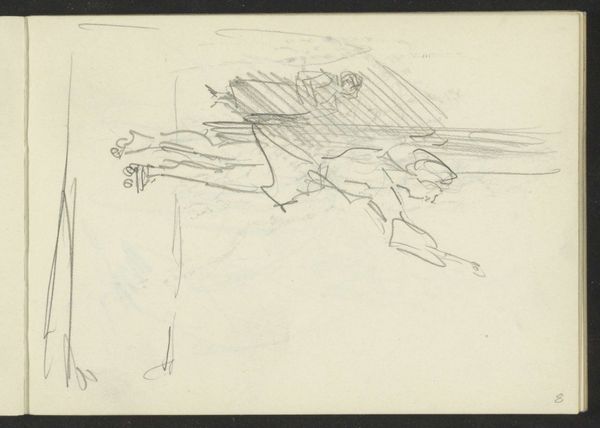
Copyright: Rijks Museum: Open Domain
Curator: Here we have Isaac Israels' drawing, "Slagwerkers, onder andere met xylofoons," dating roughly from 1875 to 1934. It’s done in graphite. Editor: What strikes me is its almost chaotic energy. The lines are so frenetic, and yet they suggest a complex scene, perhaps of music in motion. Curator: Yes, and if you consider the context, Israels was deeply immersed in capturing fleeting moments, the rhythms of modern life in bustling urban environments. Music halls, circuses—places of spectacle. He used graphite drawings like this as a raw source for his larger oil paintings. Editor: So it's not the finished work but more of a…notation? An attempt to catch something ephemeral and freeze it in form. Note how the weight of the lines vary. Light hatching for atmosphere versus sharp, dark strokes where the instruments or figures appear. Curator: Precisely. It reflects that immediacy. Notice how some faces are only hinted at—generalized, like masks in performance. But, to audiences familiar with the instruments of that period, or the cultural milieu of theatrical performances, the drawing would instantly spark a set of expectations and memories. They are activating deeply shared cultural schemas, even in this fragmented form. Editor: Interesting. For me, the abstraction actually heightens the rhythmic quality. We have all of these partial forms, these incomplete representations that allow the eye to complete them, just as the mind fills in the silences in music. There is something incredibly satisfying in its visual incompleteness, yet full of potential sound. Curator: Absolutely. Consider that in many cultures music has direct connections with spiritual transcendence. Perhaps Israels wasn't simply capturing a band, but a transformative cultural ritual? The instruments are then both objects, and tools of transformation. Editor: So much conveyed through such economy of line. A reminder that art's power resides not just in detail, but in suggestion. Curator: A fleeting impression that nonetheless resonates deeply within shared cultural experience. Editor: Precisely. I’ll definitely remember that observation next time I look at this piece.
Comments
No comments
Be the first to comment and join the conversation on the ultimate creative platform.
